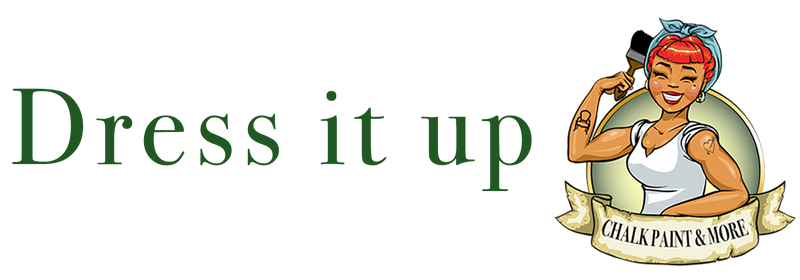How to paint kitchen cabinets?
Painting Kitchen Cabinets with Fusion Mineral Paint
Want to give your kitchen cabinets a fresh new look? Look no further! This guide provides step-by-step instructions to paint your cabinets with Fusion Mineral Paint. Fusion Mineral Paint is a high-quality, durable paint that will transform your cabinets and give them a beautiful, professional finish.
Step 1: Preparation
Before painting, properly prepare your cabinets. Remove all doors, drawers, and hardware. Clean the surfaces thoroughly with a mild cleaner to remove grease or dirt. Lightly sand the cabinets to create a smooth surface for the paint to adhere to. Wipe away dust with a damp cloth.
Step 2: Primer
Although Fusion Mineral Paint is self-priming, it is recommended to use a bonding primer for extra adhesion, especially if your cabinets have a glossy finish. Apply a thin coat of Fusion Mineral Paint Ultra Grip with a brush or roller. If the surface is very glossy, apply a second coat after 12 hours. Allow the Ultra Grip to dry completely before proceeding.
Step 3: Painting
Now it’s time to paint your cabinets with Fusion Mineral Paint. Stir the paint well before use. Apply with a high-quality brush or foam roller in long, even strokes. Start with the cabinet frames, then move on to the doors and drawers. Allow the first coat to dry completely before applying a second coat. Depending on the color and coverage desired, additional coats may be necessary.
Step 4: Finishing
Once the final coat is dry, apply a topcoat for extra durability and protection. Fusion Mineral Paint offers a range of topcoat finishes, including matte, satin, and gloss. Follow the manufacturer’s instructions for application and ensure even coverage. Allow the topcoat to dry completely before reattaching cabinet doors, drawers, and hardware.
Step 5: Maintenance
With proper care, your newly painted cabinets will look beautiful for years. Avoid harsh chemicals or abrasive cleaners that can damage the finish. Instead, clean cabinets regularly with a mild soap-and-water solution. Wipe up spills immediately to prevent stains. Touch up any areas that wear or chip over time.
Now that you know the steps, you can confidently paint your kitchen cabinets with Fusion Mineral Paint. Enjoy the process and the transformation your kitchen will undergo!
Painting Kitchen Cabinets with Annie Sloan Chalk Paint
Preparation
Before starting, check what material your kitchen cabinets are made of. Many kitchens are finished with laminate or foil. If it can be removed easily, that’s best. The MDF underneath is easier to paint than the foil or laminate itself. You can remove laminate/foil using a heat gun. If removal is difficult, paint directly over it.
Kitchens with laminate/foil:
-
Clean with St. Marc and lightly roughen the surface with the green side of a sponge or fine sandpaper.
-
Then proceed to Step 2.
MDF or wood kitchens:
Step 1
-
Clean the cabinets with St. Marc (2 caps in a bucket of water).
-
Focus on degreasing around handles — any leftover grease can cause spots after painting.
-
Use the green side of a sponge if needed.
-
Rinse thoroughly with clean water to remove any residue.
-
For very smooth surfaces, lightly sand with quality sandpaper (e.g., 3M/Gamma) and then clean again with St. Marc.
Step 2 — First Coat
-
Apply the first coat of Annie Sloan Chalk Paint with oval brush No. 8 or a large flat brush.
-
Drying time: 24 hours
Step 3 — Second Coat
-
Apply the second coat of Chalk Paint.
-
Slightly dilute this layer with water.
-
If application feels stiff, add a little more water or slightly dampen the brush.
-
If small bubbles appear, thin a little more.
-
Don’t overwork one spot — this can re-wet the underlying layer and lift it.
-
Drying time: 24 hours
Step 4 — Optional Third Coat
-
For very smooth surfaces or light colours, a third coat may be needed.
-
Apply as above, slightly diluted.
-
Don’t overwork one spot.
-
Drying time: 24 hours
Step 5 — Finishing with Annie Sloan Clear Wax
-
Apply a thin layer of wax, preferably with a wax brush, to reduce streaks.
-
Apply enough wax, then immediately buff with a cotton cloth (e.g., tea towel) until smooth.
-
Check with your hand — sticky? You applied too much! Wipe off excess with a cloth.
-
Drying time: 24 hours
Step 6 — Second Layer of Clear Wax
-
Apply a second layer of Clear Wax in the same manner.
-
Drying time: 24 hours
Step 7 — Third Layer of Clear Wax
-
Apply a third layer of Clear Wax as before.
-
Wax requires at least 3 weeks to cure. Thicker layers may need longer.
Tip: Instead of wax, you can also use Annie Sloan Lacquer — also 3 layers with 24 hours drying between coats.

